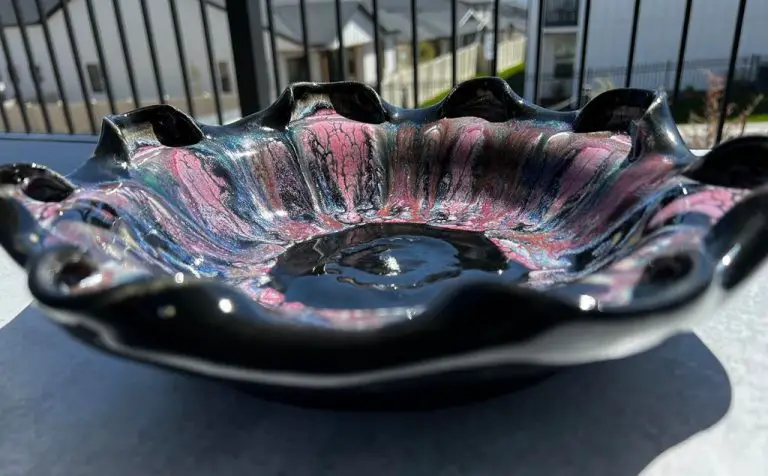Which Lamp Made Of Clay?
History of Clay Lamps
Clay lamps have been around for thousands of years, with the earliest evidence dating back over 10,000 years. Archaelogical excavations have uncovered simple clay lamps in ancient Mesopotamia, Egypt, Greece and Rome. These early lamps were made of clay, shaped by hand, and fired in a kiln. The clay was rolled and molded into a cup shape, with a hole on top for the wick.
In ancient Mesopotamia, excavations at the city of Ur uncovered clay lamps dating back to 3500 BCE. These lamps consisted of a round shallow bowl with a pinched peak to hold the wick. The ancient Egyptians also produced elegant clay lamps, often shaped like lotus flowers or animals. By 1500 BCE, they were mass producing molded pottery lamps.
The ancient Greeks and Romans further advanced clay lamp designs, creating small elegant lamps in a variety of shapes like bowls, deer, birds and more. Elaborate lamps were made using molds and decorations like decorative handles. The famous red figure and black figure pottery techniques were also used to create decorative scenes on Greek lamps. From simple functional lamps to elaborate works of art, clay lamps evolved across ancient civilizations.
Clay Lamp Designs
Clay lamps come in a variety of designs that serve different functions. Here are some of the basic parts and styles:
Basic Parts:
- Body – The main reservoir that holds the oil or wax fuel source.
- Nozzle – The spout where the wick comes out to be lit.
- Handle – Allows the lamp to be carried or hung.
- Stand – A base that raises the lamp off the surface.
Styles:
- Open bowl – A simple curved bowl with a spout, often portable.
- Closed body – An enclosed container good at retaining heat and protecting the flame.
- Terra cotta – Made from natural reddish clay, often unglazed.
- Decorated – Elaborate shapes and painted designs for aesthetic appeal.
Clay lamp styles evolved over time for both form and function. The basic parts allow fueling, lighting and handling the flame. Stylistic variations suit placement on tables, floors, or hanging on walls and ceilings.
Clay Lamp Production
The production of clay lamps begins with the careful selection and preparation of the clay. Historically, lamp makers used locally available clay that was dug or mined from deposits. The clay needed to have the right consistency and purity to hold its shape when molded and maintain structural integrity during the firing process.
Some of the most common clays used include earthenware, stoneware, porcelain, and terra cotta. Earthenware clays are very workable, flexible, and inexpensive. Stoneware clays can withstand higher firing temperatures and are more durable. Porcelain clays create a smooth white finish but are more challenging to work with. Terra cotta has a distinctive reddish color from iron oxide and creates a porous final product.
Clay lamps are shaped and molded using a few main techniques. Lamp makers can throw vessels on a pottery wheel to achieve uniform symmetrical shapes. More freeform shapes can be created by hand building techniques like pinching, coiling, and slab building. Molds and stamps can be used to impress designs and patterns. Intricate details can be added by carving and incising clay in its soft, leather-hard state before firing.
Once shaped, clay lamps must be fired in a kiln at high temperatures ranging from 1100°F to over 2300°F. The firing process hardens the clay through sintering, chemically bonding clay particles through partly melting and fusing the silica compounds. A glaze can be applied before firing to create a glossy surface that is water-resistant. After the bisque firing, a lower temperature glost firing can melt the glaze coating to the surface.
Decorative Clay Lamps
Clay lamps have been decorated in a multitude of ways to enhance their aesthetic beauty. Glazing and coloring techniques add vibrancy and interest to the lamp’s surface. Painted designs and motifs reflect cultural artistic styles and personal expressions. Regional techniques showcase local materials, methods, and motifs.
Glazes utilizing minerals and metal oxides produce diverse colors and effects. Opaque whites, earthy browns, vivid blues, greens and yellows adorn lamps glazed before firing. Alternatively, colored slips or engobes applied before firing soak into the clay to produce saturated hues. Post-firing, unfired pigments mixed with oil or resin create polychrome designs when painted on the lamp’s surface. Inlay and relief techniques press colored clays into the surface to form patterns and shapes.
Painted designs depict religious symbols, historical narratives, celestial objects, animals, plants, geometric shapes, and abstract patterns. Recurring motifs reflect cultural beliefs and local flora and fauna. Stylized elements and motifs create regional decorative styles seen in Greek black-figure, Egyptian faience glazing, Chinese porcelain painting, and Aztec clay stamps. The paintings highlight cultural narratives and demonstrate artistic techniques.
Regional glazing and painting methods showcase local artistic traditions. Cobalt blue decorates ceramics across the Middle East while lead glazing appeared commonly in ancient Judea. Spanish lusterware exhibits metallic iridescence, including the ruby luster technique innovated by Moorish artisans. Uniquely Japanese raden decorates ceramics with mother-of-pearl inlay. The diverse decorative techniques enhance clay lamps with cultural symbolism, artistic mastery, and regional diversity.
Functional Uses
Clay lamps have served many functional purposes throughout history. The most basic function is providing light. Before the advent of electric lighting, clay lamps illuminated homes, workshops, temples and other indoor spaces. The flickering flame of an oil-burning lamp casts a warm, ambient glow, creating an atmosphere that is both practical and aesthetically pleasing.
In addition to lighting rooms, clay lamps have also been used as sources of heat. The heat emitted from the burning oil or other fuel can help warm small indoor areas during cold weather. This radiant heat makes clay lamps useful for heating purposes beyond just the light they provide.
Clay lamps also play an important role in many religious and spiritual rituals across different cultures. Often they are used to light incense or fires to purify ritual spaces. The lamps may burn oils or ghee with spiritual significance. Their flames are thought to carry prayers to deities and illuminate ceremonies. The usage of clay lamps in rituals connects the practical everyday benefits of lighting with cultural and sacred practices.
Clay Lamps vs. Other Light Sources
Clay lamps have been used for lighting throughout history, but they have always existed alongside other illumination methods like candles, oil lamps, and electric lights. Each type of lighting has its own advantages and disadvantages when compared to simple clay lamps.
Candles are easy to make from wax or tallow, but they burn out quickly and pose a fire hazard. Oil lamps last longer than candles, but require fuel that can be messy and smelly. Electric lights are convenient and bright, but rely on access to electricity infrastructure.
Clay lamps are appealing for their simplicity. They require no fuel source other than a wick. Well-designed clay lamps can burn for hours with a bright, warm light. The clay helps prevent flickering and evenly diffuses the glow. However, the light from a basic clay lamp is relatively dim compared to other options. Clay lamps are stationary and heavy to move around. They also break if dropped.
In places with frequent power outages or limited access to electricity, candle and oil lamps are more practical lighting solutions than electric options. Clay lamps can provide a cleaner, steadier light source than messy fuels in these situations. However, with reliable electricity, modern lighting provides the brightest and most convenient illumination.
Clay lamps continue to be valued for tradition, beauty, and simplicity despite the availability of more advanced lighting technologies. The natural glow and earthy charm of clay lamps make them an appealing decor choice even in electrified homes.
Clay Lamps in Culture
Clay lamps have held deep symbolic meaning and cultural significance across religions, traditions, and civilizations over the ages. Evidence of their prominence has been unearthed across archaeological sites around the world.
In many faiths and belief systems, the clay lamp came to represent enlightenment, wisdom and the presence of the divine. Their flickering flames were thought to connect the material world with spiritual realms. Hindu tradition honors the clay lamp, known as a diya, during holidays like Diwali. Buddhists also incorporate clay lamps into spiritual rituals and festivals.
Clay oil lamps were central to cultural traditions and celebrations in the ancient Mediterranean and Middle East. During Jewish Hanukkah, lighting the clay Hanukkiah commemorates the rededication of the Second Temple. In ancient Egypt, clay lamps were used ceremonially to honor gods and goddesses. The Ancient Greeks and Romans also used terracotta oil lamps in cultural events, rituals, and festivals.
Impressive collections of ancient clay lamps have been uncovered across archaeological sites in Europe, Asia, Africa and the Middle East. Museums around the world display clay lamps among their prized artifacts. Their discovery offers insight into the cultures, lifestyles, and technologies of past civilizations.
Modern Clay Lamps
In the contemporary era, clay lamps are often created more for decoration and artistic expression than for practical lighting. Modern lamps showcase a huge diversity of shapes, glazes, textures, and designs. Clay artists today draw inspiration from minimalism, abstract art, nature themes, and geometric patterns to create unique lamp pieces.
While some modern lamps can be lit with oil or candles, many are intended solely as decorative objects rather than functional lighting. The irregular shapes and delicate materials used in contemporary clay lamps often make them impractical as stable sources of illumination. However, as accent pieces, they bring warmth, handmade craftsmanship, and artistic flair to any living space.
Clay lamp artists today have the freedom to experiment and innovate without the constraints of tradition. New firing techniques like raku allow unpredictable patterns, cracks, and colors in the clay. Bold, asymmetric shapes replace traditional rounded silhouettes. The emphasis is on one-of-a-kind art objects that showcase the creativity of the artist. Even when not illuminated, contemporary clay lamps enrich interior design through their handmade imperfections and inspired designs.
Notable Examples
Clay lamps found in archaeological excavations provide a fascinating window into ancient civilizations. Some of the most famous include elaborate Greek and Roman oil lamps decorated with intricate designs. Excavations in Athens uncovered workshops dedicated to mass-producing affordable clay lamps for everyday use. In Egypt, tombs contained clay lamps inscribed with hieroglyphics and religious imagery.
Regional styles also emerged across the ages. In Ancient Mesopotamia, conical spouted lamps were popular, while Ancient Persians favored circular lamps with multiple spouts. During the Middle Ages in Europe, mosque lamps with onion-shaped reservoirs spread from Spain to Turkey. In Asia, lotus-shaped lamps symbolized Buddhism.
Modern master craftsmen keep clay lamp traditions alive. Japanese artist Shigeo Sasabe sculpts abstract organic forms that cast striking shadows. American potter Warren MacKenzie is renowned for his practical yet elegant wood-fired stoneware lamps. The Clay Studio in Philadelphia nurtures new generations of artists who incorporate clay lamps into their works. From ancient artifacts to modern artworks, clay lamps reveal our enduring fascination with molded earth and emitted light.
The Enduring Appeal
Despite advances in lighting technology, clay lamps continue to be appreciated and used today. There are several reasons these simple lamps have endured over centuries:
Clay lamps have an ancient history, with evidence of their use dating back over 10,000 years in Mesopotamia. The simplicity of shaping clay into a container, filling it with oil or fat, and placing a wick to produce light captivated early humans. This ingenious design allowed people to extend their days, engaging in activities after sundown.
Their gentle, natural light provides a warmer ambiance than modern lighting. The flickering glow is mesmerizing and promotes relaxation. Many cultures incorporated symbolic meaning into lamp shapes and decorations. The continuity of this ancient technology provides a sense of connection to the past.
Clay lamps require no electricity and natural oils and fats, making them useful in areas without modern infrastructure. They are an economical, sustainable lighting option. The materials are affordable and accessible.
The handcrafted nature of clay lamps adds uniqueness and human touch often missing from mass produced goods. Their imperfections and individual details bring character and charm.
In an age of ubiquitous technology, the elementary utility of clay lamps endures. Their fundamental design fulfills a basic human need in a simple, earthy way. After thousands of years providing illumination, clay lamps remain an elegant, reliable light source.



